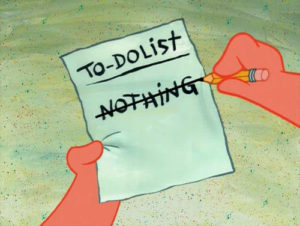
“Thanks to a growing abundance of educational content resources, the average B2B buyer has completed between 50 and 90% of the buying journey by the time they make first contact with your business.”
Doesn’t that send a chill down your spine? Fighting against competition in sales goes with the territory. Product managers position products against their competition. They formulate answers to objections. They compare features and functions. They draft documents to empower sales people with information to answer all kinds of questions.
This is all extremely important. But unfortunately too often it is not enough.
If the above quote is true, then customers already have all this information. When they talk to you about competition what they are more likely doing is using you to fulfil their procurement department’s requirement to get three competitive bids.
When a customer is presented with a “must have” situation, they will use all of the information sources at their disposal to choose a product/service. So much of the buying cycle is done before they ever reach out to a sales person. They are looking for someone to help them with a placing an order. This is why sales people are so difficult to evaluate when you use only quota attainment as your metric. (See my recent posting on “Differentiating Sales People” https://t.co/ArZsOq9Jil ). Taking an order is a very, very important part of sales, but in my opinion it isn’t selling.
In the middle of the second decade of the 21st century, much of what we sell is not what would be called mission critical. It is not a “must have.” There may be consequences to not purchasing or implementing, but it’s not a “must have.”
So for everything else, where a sales person is actually involved, what are you really selling against? If your customers have ubiquitous access to competitive information and product comparison information, why are they talking to you?
They are comparing you against DOING NOTHING.
A customer is comparing a product or a service against continuing to do exactly what has put them in the position to be able to afford your product or service in the first place i.e. reasonably well to excellent. They are trying to see if they should change. Change is hard. Change management is even harder, it’s a whole profession after all.
Sales people and sales mangers increasingly need to think about this notion of “Do Nothing” as the real competitor. Like a product or a service, it has attributes against which you have to compete. Those attributes are a specific set of features but NOT at a product level. We need to compete against a vision of the future.
We need to define the customer’s vision of the future. One that is a natural progression based on the current status quo. We need to be careful that our version of the customer’s vision of the future, extrapolated from their status quo, isn’t overly negative. We need to describe what is in their head that led them to entertain the idea that your product or service might be helpful? Then we need to define our vision of the future.

Extracting the nugget of doubt that led them to entertain a meeting with you is the key to every conversation you have with the customer. Part of the challenge is to uncover the underlying issue, not just what they tell you. There is a return on investment or more accurately a “loss due to delay”. This loss is likely the source of their anxiety about the future. Uncover it, and you will be successful.
Three things to try:
- Be curious. There are many approaches to asking open ended questions but it isn’t just about asking the questions. Be genuinely curious about the answers. Get your customer talking but don’t debate. Just get the information.
- Have an opinion. IF ASKED, have an opinion based on generally available information either about your customer’s industry or the product/service area you work in. Don’t use this as an opportunity to give a product pitch.
- Uncover the decision making process. When you compete against “Do nothing”, the decision to purchase can be very different from a tradition procurement cycle. A decision making process consists of people and criteria. Do your best using number 1 and number 2 to uncover the process.(watch for an upcoming article on this)
Recently I wrote about Sales Inspection, https://t.co/xKCkyzc0CO. Much of my concern about sales inspection is that coaching in a traditional way puts all of the burden of identifying the behavior change on the sales person. When you’re competing against “Do Nothing” many of our sales people will have trouble just because they are dealing with a customer that is so much more informed than they ever have been before and their old approach will not work. Our coaching and process needs to be focused on helping our sales people navigate the new normal.
Good Luck and Good Selling.
If this piece as piqued your interest, or you have an issue you’d like help with come see us at www.spectrumleap.com/contact/
